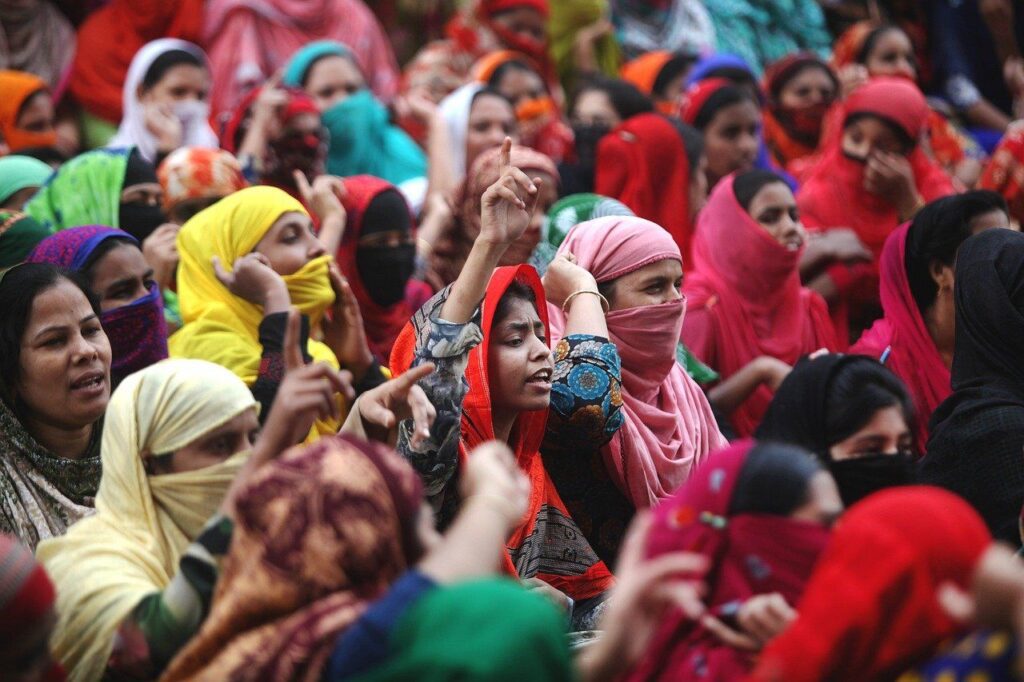Gender Equality in India 2023: Gender Equality refers to equal rights, responsibilities and opportunities for women, men, girls and boys.
It implies that the interests, needs and priorities of all genders are respected. It does not mean that women and men have to become the same, but that their rights, duties and chances in life do not depend on their gender.
Gender equality is intrinsic to human rights and key to building a peaceful and progressive society. No country can truly flourish if half of its population is denied equal opportunity. India has made significant strides but a lot more needs to be done.
What is Women Reservation Bill in India 2023? Its Importance
Importance of Gender Equality in India
- Economic Growth – Enabling women to participate equally can boost India’s GDP by 18% as per IMF estimates. Skilled women workers enhance productivity and innovation.
- Poverty Alleviation – Households where women control income tend to spend more on family food, health and education, helping to break cycles of poverty.
- Health & Nutrition – Gender equality leads to improved maternal health and nutrition levels among girls & women, lowering infant and child mortality.
- Education – Educated women tend to delay marriage and pregnancies, have fewer and healthier children and provide better education to kids.
- Environmental Sustainability – Women play a huge role in resource management with knowledge of local needs. Their participation is vital for sustainability.
- Human Rights – Gender equality is central to upholding the human rights of all citizens regardless of gender. It enables women to live with dignity and realize their full potential.

Challenges for Gender Equality in India 2023
Despite some positive developments, gender inequality remains a significant challenge in India due to socio-cultural and economic factors:
- Patriarchal Norms – Traditional patriarchal attitudes lead to preferential treatment for boys in access to nutrition, health, education, career options etc.
- Violence Against Women – Crimes like rape, dowry deaths, honour killings, domestic abuse, and acid attacks point to women’s vulnerability. The lack of safe public spaces hinders mobility.
- Foeticide & Infanticide – Biased sex-selective abortions, female infanticide has led to the adverse child sex ratio of 929 girls per 1000 boys as per the 2011 census.
- Child Marriage – About 27% of girls are married before 18 despite laws prohibiting child marriage. Early marriage curtails education and exposes them to health risks.
- Access to Healthcare – High maternal mortality rates, and anaemia among women point to neglect of women’s health. The sex ratio declines with age highlighting discrimination.
- Workforce Participation – Female labour participation has dropped from 36.7% in 2005 to 26% in 2018. Women are largely in low-paying, vulnerable work. The gender pay gap persists.
- Political Representation – Women comprise only 14% of Parliament and state legislature seats. Lack of political voice hampers policymaking for women.

Government Initiatives for Gender Justice
India has enacted various laws and schemes to promote gender equality:
- Constitutional Rights – The Constitution guarantees equal rights and prohibits discrimination on the basis of gender. It empowers the state to make special provisions for women.
- Legislations Against Gender Violence – Laws like the Domestic Violence Act (2005), Sexual Harassment at Workplace Act (2013), and stricter punishment for acid attacks and rapes.
- Women’s Reservation Bill – The bill was passed in September 2023. According to the bill, women would be given 33% of the seats in the Lok Sabha and state legislative bodies.
- Property Rights – The Hindu Succession Amendment Act 2005 gave women equal rights in ancestral property. Hindu/Muslim personal laws were also amended to improve women’s rights.
- Support Schemes – Schemes like Beti Bachao Beti Padhao promote the education of the girl child. Ujjwala provides free LPG connections improving women’s quality of life.
- Gender Budgeting – Government departments now allocate budgets addressing the needs of women through various schemes like hostels for working women.
The Road Ahead: What Needs to be Done
While laws and schemes are important, mindsets and socio-cultural practices need to evolve further for authentic gender justice. Some action areas:
- Improving Access to Education – Achieving 100% enrollment and retention of girls in schools. Making education gender-sensitive. Providing skills training for employment.
- Equal Economic Participation – Increasing female workforce participation through vocational guidance, flexible timings, creche facilities and safe transportation. Mandating equal pay for work of equal value.
- Political Empowerment – Swift passage of women’s reservation bill to increase political representation. Support women village leaders through training.
- Enhancing Women’s Safety – Strict implementation of laws on gender violence. Engaging men and boys to address patriarchal attitudes. Making public spaces more secure. Encouraging girls to speak up.
- Healthcare and Nutrition – Expanding health services for women & girls with more budgets, facilities, and trained personnel. Challenging son preference through campaigns.
- Support Framework within Households – Promoting shared household and child care responsibilities between men and women. Paternity leave, family counselling, engaging men as partners.
- Gender Sensitization – Including gender equality in school curriculum. Training teachers to counter gender stereotypes. Gender sensitization programs for police, judiciary, and media.
The vision of gender justice and equality cannot be achieved only through government action. It requires a collaborative effort cutting across all sections of society – individuals, families, communities, public and private institutions need to weave it into attitudes, behaviours, policies and practices. We all have a role in bringing about this change.
Conclusion
Gender equality is central to India’s future progress. While there are social and economic barriers, they are not insurmountable. We need collective action to reshape traditions and institutions that discriminate against women and deny their rights. With strategic interventions and community partnerships, we can build a gender just India where women and men alike can flourish. The time for change is now.
